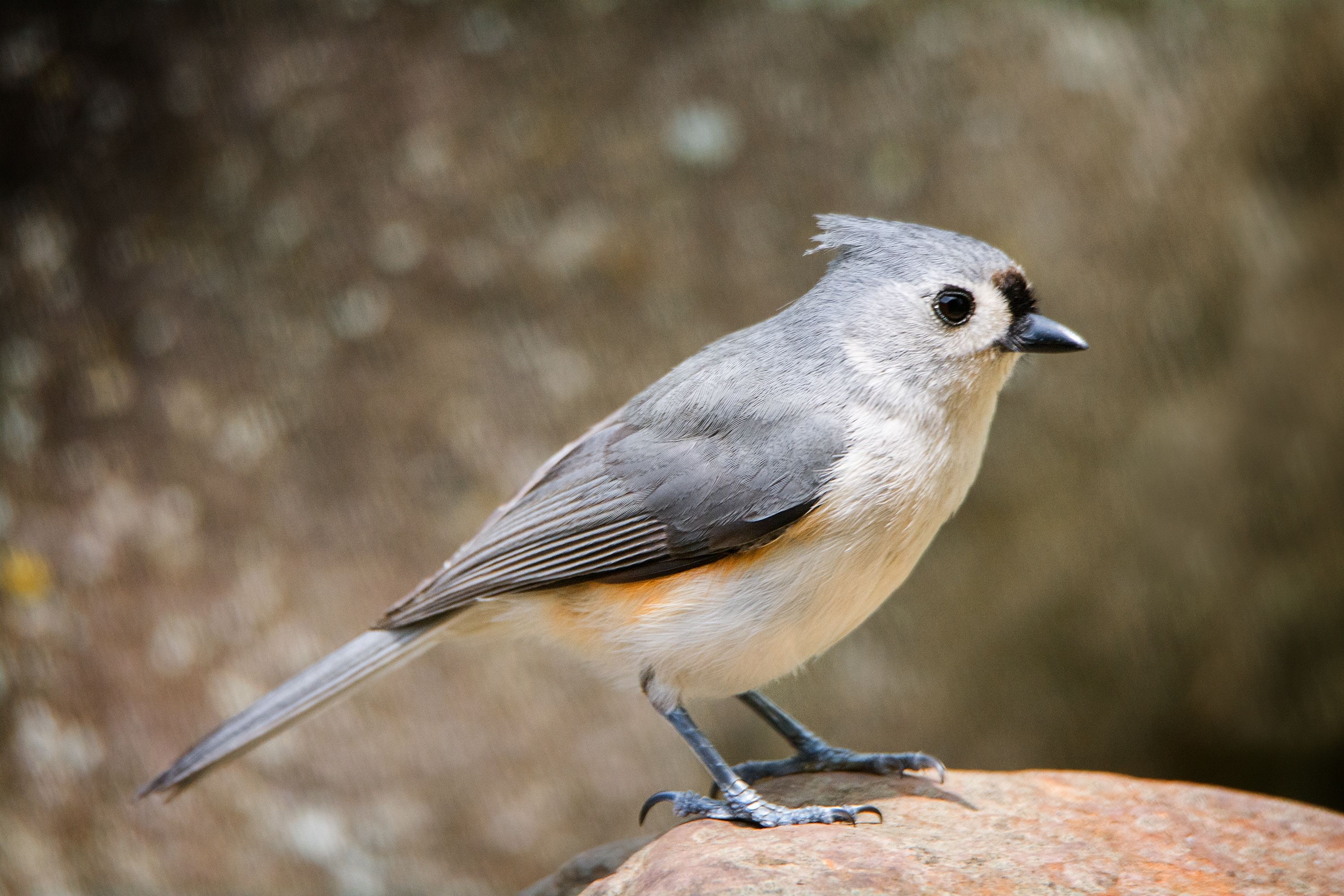Tufted titmouse
(Baeolophus bicolor)

Description
Baeolophus bicolor, commonly known as the Tufted Titmouse, is a small songbird that is widespread throughout the eastern regions of North America. This species belongs to the family of Paridae, which consists of approximately 60 small to medium-sized bird species. In this article, we will explore the physical characteristics, habitat, behavior, diet, and breeding habits of the Tufted Titmouse in detail. Physical Characteristics: The Tufted Titmouse is a small bird, with a length of around 5.5 to 6.5 inches (14 to 17 cm) and a wingspan of approximately 7.5 to 8.5 inches (19 to 22 cm). They weigh between 0.4 to 0.6 oz (10 to 18 g). The species is sexually monomorphic, which means that males and females look similar in appearance. The plumage of the Tufted Titmouse is predominantly gray, with a distinctive crest on its head that is black in color. The bird has a black patch above its beak and a white belly. The wings and tail feathers of the Tufted Titmouse are a mix of gray and brown, and the bill and legs are both black. Habitat: The Tufted Titmouse can be found in deciduous and mixed forests throughout the eastern regions of North America. They are also commonly found in suburban areas with mature trees and gardens. This species is non-migratory, which means they do not migrate during the winter season, and instead, they remain in their breeding territory throughout the year. Behavior: The Tufted Titmouse is a social bird and often found in small flocks of 6 to 10 individuals during the non-breeding season. During the breeding season, they form pairs and are often seen foraging together. These birds are active and agile, and they move through the trees with ease, using their strong feet to cling to branches and twigs. They are known for their acrobatic abilities and can hang upside down to reach food. Diet: The Tufted Titmouse is primarily a granivore, meaning that it feeds on seeds and nuts. They have a specialized bill that is strong enough to crack open seeds and nuts such as sunflower seeds, acorns, and hickory nuts. In addition to seeds and nuts, they also feed on insects, spiders, and other invertebrates. They will often store food for later use by hiding it in crevices or under bark. Breeding Habits: The breeding season for the Tufted Titmouse begins in late March and continues until early August. During this time, the male sings to attract a mate and establish a breeding territory. The nest is built in a natural cavity, such as an old woodpecker hole or a hollow tree, or in a nest box. The female lays between 3 to 9 eggs, which she incubates for around 12 to 14 days. The chicks are altricial, meaning they are born naked and helpless and are dependent on their parents for food and care. The young fledge after around 16 to 18 days and are able to leave the nest. Conservation Status: The Tufted Titmouse is classified as a species of least concern by the International Union for Conservation of Nature (IUCN). The population of the species is stable, and it is widespread throughout its range. The bird is common in many areas and has adapted well to living in suburban environments, where it can often be seen visiting bird feeders. In conclusion, the Tufted Titmouse is a small, attractive bird that is widespread throughout the eastern regions of North America.
Taxonomic tree:







